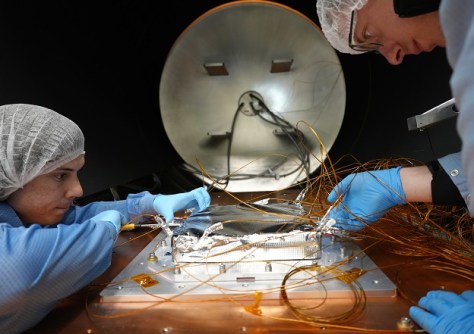
Australia’s QuantX Labs is gearing up for a major milestone in Australian space technology development, as it prepares to launch its leading-edge technology into space.
In concert with French space logistics company Exotrail, QuantX will launch a key component of its atomic clock technology, TEMPO, hosted on the ‘spacevan’ vehicle due for launch on a SpaceX mission in December 2025 at the earliest.
With the support of a $3.7 million grant from the Australian Space Agency’s Moon to Mars initiative, QuantX Labs will launch a key sub-system of its next-generation optical atomic clock.
This key subsystem, known as an optical frequency comb, is a cutting-edge tool that unlocks a myriad range of space applications beyond high-performance timing including deep-space communications, navigation, positioning and synchronised Earth observations.
Optical combs were first invented at the turn of the century and won the Nobel Prize in Physics in 2005 because of their potential broad-ranging impact.
QuantX’s demonstration will be the first time that an optical frequency comb has been launched into orbit.
The company’s comb has already completed rigorous environmental tests, including the need to survive the extreme conditions during launch.
High-precision timing in space is already a valuable resource underpinning the GNSS. The first launch of TEMPO’s ultra-precise timing capability aims to lay the foundations for an Australian sovereign GNSS solution as well as an alternate to current GPS and similar networks.
“This launch represents not only a breakthrough for our TEMPO technology but also the culmination of countless hours of hard work by our engineers and physicists,” said QuantX Labs’ Managing Director, Professor Andre Luiten.
“We have managed to deliver this outcome in much less time and at much less cost than is traditional. We are incredibly proud of what we’ve achieved and excited to see Australia take a leading role in space-based precision timing.”
A team from QuantX Labs will travel to France this month to collaborate with Exotrail on further testing and integration of the module aboard spacevan.













